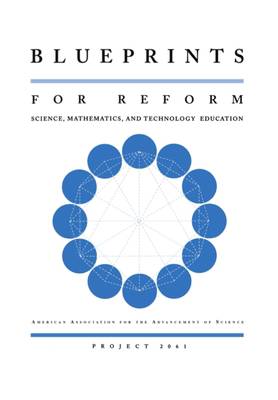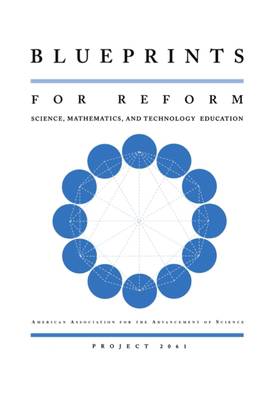
- Afhalen na 1 uur in een winkel met voorraad
- Gratis thuislevering in België vanaf € 30
- Ruim aanbod met 7 miljoen producten
- Afhalen na 1 uur in een winkel met voorraad
- Gratis thuislevering in België vanaf € 30
- Ruim aanbod met 7 miljoen producten
Zoeken
Blueprints for Reform
Science, Mathematics, and Technology Education
American Association for the Advancement of Science
Paperback | Engels
€ 43,45
+ 86 punten
Omschrijving
What would it cost the education system to adopt policies that emphasize science literacy for all students? How can we ensure that tests measure what educators, parents, and others want them to? How can universities set admissions policies that motivate K-12 institutions to produce science literate graduates? Project 2061 of the American Association for the Advancement of Science believes that serious efforts to reform the K-12 curriculum in this country require an understanding of the whole of education. To gain this kind of perspective, Project 2061 commissioned experts to prepare reports on a dozen areas of the education system that would have implications for the implementation of the reforms defined in their earlier volumes Science for All Americans and Benchmarks for Science Literacy. Blueprints for Reform is a summation of those reports offering teachers, parents, policymakers, business leaders, and others a starting point for their exploration of the education system and its response to reform.
Blueprints for Reform includes discussions of equity, assessment, teacher education, policy, finance, school organization, curriculum connections, family and community, research, materials and technology, and business and industry. A chapter is devoted to each of these topics providing an overview of the issue and some recommendations on how to move forward. The idea behind this strategy is to bring current research together in one place so anyone working in the area of science education and reform can have complete access to the latest information, methods, and debates.
To spark the kind of thoughtful debate that can lead to meaningful change, Blueprints for Reform also has an on-line component providing summaries of the chapters in the book, as well as a database of bibliographies and science- and education-related topics. Through Blueprints On-Line, anyone with a stake in improving science education can share experiences with peers, find information on interrelated facets of the education system, or air their views on how best to go about systemic change. Blueprints for Reform offers a bold new examination of the current system to determine what changes are desirable and possible in science education, and how best to ensure our children are prepared for life in the twenty-first century.
Blueprints for Reform includes discussions of equity, assessment, teacher education, policy, finance, school organization, curriculum connections, family and community, research, materials and technology, and business and industry. A chapter is devoted to each of these topics providing an overview of the issue and some recommendations on how to move forward. The idea behind this strategy is to bring current research together in one place so anyone working in the area of science education and reform can have complete access to the latest information, methods, and debates.
To spark the kind of thoughtful debate that can lead to meaningful change, Blueprints for Reform also has an on-line component providing summaries of the chapters in the book, as well as a database of bibliographies and science- and education-related topics. Through Blueprints On-Line, anyone with a stake in improving science education can share experiences with peers, find information on interrelated facets of the education system, or air their views on how best to go about systemic change. Blueprints for Reform offers a bold new examination of the current system to determine what changes are desirable and possible in science education, and how best to ensure our children are prepared for life in the twenty-first century.
Specificaties
Betrokkenen
- Auteur(s):
- Uitgeverij:
Inhoud
- Aantal bladzijden:
- 320
- Taal:
- Engels
Eigenschappen
- Productcode (EAN):
- 9780195124279
- Verschijningsdatum:
- 30/07/1998
- Uitvoering:
- Paperback
- Formaat:
- Trade paperback (VS)
- Afmetingen:
- 154 mm x 229 mm
- Gewicht:
- 571 g

Alleen bij Standaard Boekhandel
+ 86 punten op je klantenkaart van Standaard Boekhandel
Beoordelingen
We publiceren alleen reviews die voldoen aan de voorwaarden voor reviews. Bekijk onze voorwaarden voor reviews.











